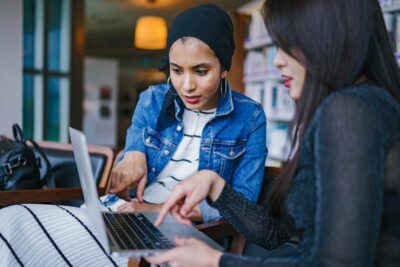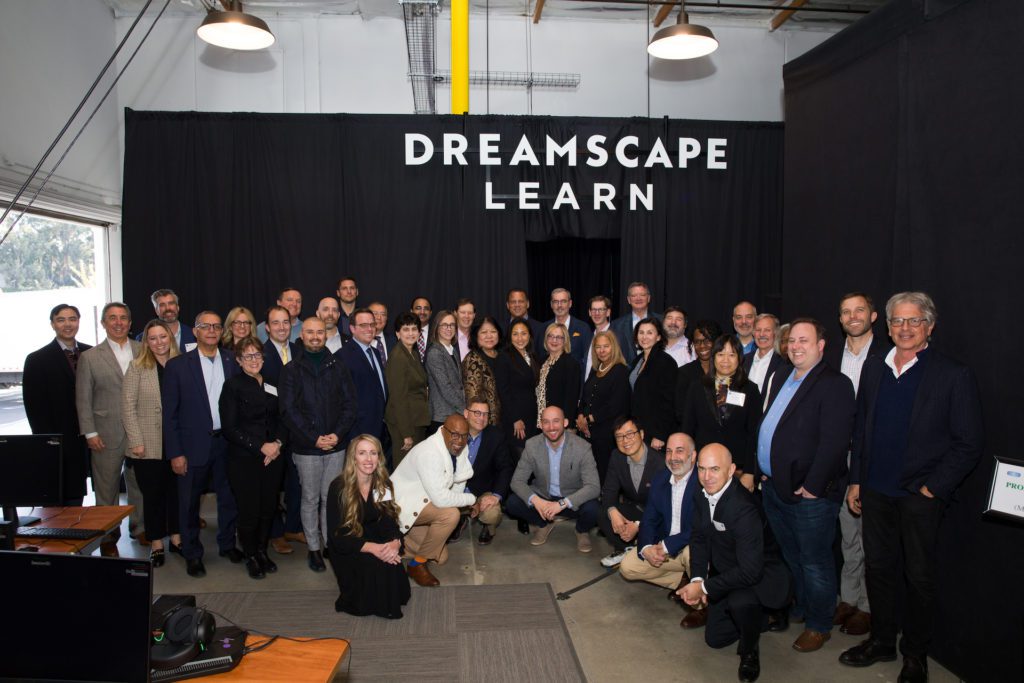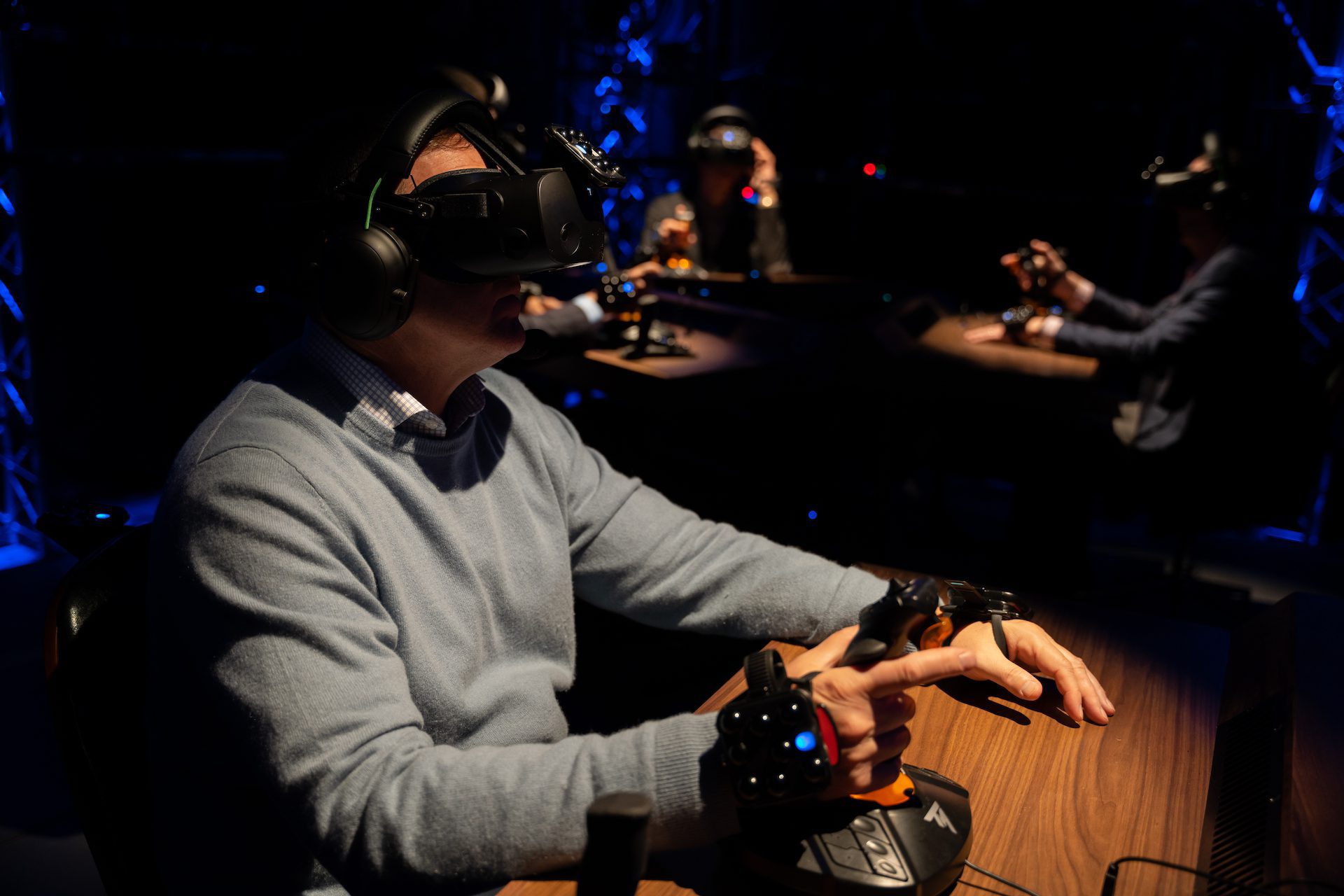What could virtual reality mean for higher ed?
EAB regularly co-hosts an event called the Presidential Experience Lab with an out-of-sector organization or company that has something innovative to teach college and university leaders—past partners have included Zappos, Google, LinkedIn, Slack, and IDEO, each focusing on different lessons uncovered in their growth and potential applications to higher education. In December 2022, my colleagues and I took over 40 presidents to Los Angeles to experience virtual reality live and in-person (ironically) with Dreamscape Learn, a new venture spearheaded by esteemed Hollywood producer Walter Parkes.
Parkes, whose production credits include such hits as WarGames, Gladiator, Men in Black, and Minority Report, has partnered with Arizona State University president Michael Crow to leverage the latest in virtual reality (VR) cinematography to transform introductory coursework, beginning in biology.
In partnership with ASU faculty, Dreamscape Learn created an immersive, interactive environment called The Alien Zoo, in which students discover that a rare alien species is suffering from a new, undiagnosed ailment and must work to identify its origin and find a way to cure the suffering population. Early pilot deployments of these instructional experiences have yielded promising results, especially for students who might otherwise be less engaged or less successful in STEM coursework. This spring, nearly 6,000 students will be taking part in these VR experiences as part of their biology coursework at ASU.
-
6,000
students will take part in VR experiences as part of their biology coursework at ASU.
Across two days, Presidential Experience Lab participants were immersed in several of Dreamscape’s short-format VR experiences, explored the possibilities of their virtual classroom environments, and experienced a small part of the biology modules developed for the Alien Zoo scenario.
Below are four key lessons from the experience, and three broad questions to consider as we all contemplate what VR and the ‘metaverse’ might mean for higher education:
1. VR could address two age-old pedagogical challenges: inspiration and application
Didactic “information transmission” often fails to provide inspiration and application, leaving requiring highly motivated students to answer “why does this matter?” and “how can I use this?” on their own. Immersive VR scenarios can place the user in a context-rich, meaningful environment that both inspires interest in the topic and requires application in the moment to progress.
2. Emotion and narrative are just as (if not more) important as the technology
Parkes noted that in Hollywood, hero narratives have long been proven to enthrall audiences in ways few other stories can. Applied in learning contexts, we can place students in “heroic” scenarios, requiring them to lead small teams to overcome a seemingly insurmountable antagonist in a narrative arc that turns the traditional biology lesson into a memorable emotional journey. As instructors seek new ways to connect to students and keep them focused, the power of narrative ought to be a core tool at their disposal.
3. VR can bring the user to otherwise inaccessible environments
Presidents at the event were dropped into virtual classroom settings ranging from outer space to ancient Egypt, and students in ASU’s introductory biology courses are (virtually) shrunk to the size of a cell to explore concepts in biology.
We’ve long been able to provide shallow exposure to foreign environments like these via imagery and video, but these new technologies promise to bring students closer and closer to a life-like simulation of the real thing.
4. VR can allow for safe repetition of high-stress and/or high-stakes tasks
It should be no surprise that the fields of flight, combat, and medical intervention have been early adopters of virtual simulation in training; these are areas in which extensive practice and repetition are required, but nearly impossible to provide without the risks of real-world consequences. Could VR be adopted more broadly in contexts like exposure therapy (say, for specific phobias) or public safety and criminal justice to allow for high-stakes training at scale?
3 key questions about the future of VR
1. What level of autonomy and flexibility is desirable (or possible) in VR learning contexts?
In many early scenarios created for students in VR, students must physically “act” in order to progress (for example, driving a vehicle, locating an object, or using a tool) but cannot truly fail or venture outside the “rails” constraining the scenario. Critics might worry that these limitations miss an opportunity to simulate the uncertain nature of reality and human error, or to allow for “outside the box” approaches to solving problems.
These experiences aren’t meant (for now) as a full replacement for real-world training or even for a full college course, however. Rather, they’re intended to be used strategically within the context of broader learning to place students into environments otherwise unavailable.
2. How and when will these technologies achieve scale in society and higher ed?
As of this writing, consumer surveys put VR headset adoption at around 60 million users in the United States and 171 million users worldwide—a much bigger share of the population than most higher ed leaders are likely to assume, but still far behind the ubiquity of mobile devices and personal computers. Consumer technology adoption can expand extremely rapidly, however, as vendors mature and costs/prices decrease. Will universities bet on VR in 2023, meeting the most tech-savvy students where they are, or wait for VR consumers to vote with their wallets in greater numbers?
-
60M
Current VR users in the U.S.
-
171M
Current VR users worldwide
3. The VR singularity: What will change about the world, and learning more specifically, when virtual experiences rival or surpass the physical?
Into the realm of science fiction and speculation, it may only be a matter of time until many of the in-person experiences we value most (time with friends, intimate conversation, attending a concert or athletic event, playing music in an ensemble, going on a hike…) are available and even enhanced in virtual settings. What will college be like in that world? What role will our classrooms and campuses play? How many “virtual universities” will emerge?
Recall Amara’s Law, named after former Stanford Institute for the Future president Roy Amara: “We tend to overestimate the effect of a technology in the short run and underestimate the effect in the long run.” This high-fidelity virtual “metaverse” may not disrupt your personal and work life next year, but future generations may look back at the 2020s and wonder—why would anyone actually commute to class?

More Blogs

How generative AI is expanding what is possible in research

Assessing online courses—OSCQR rubric



